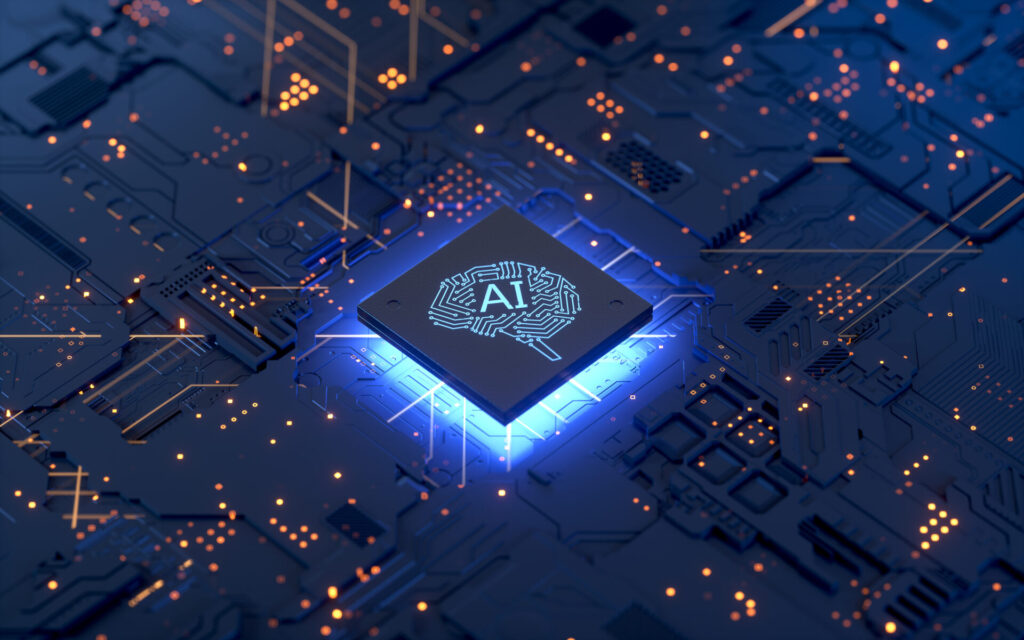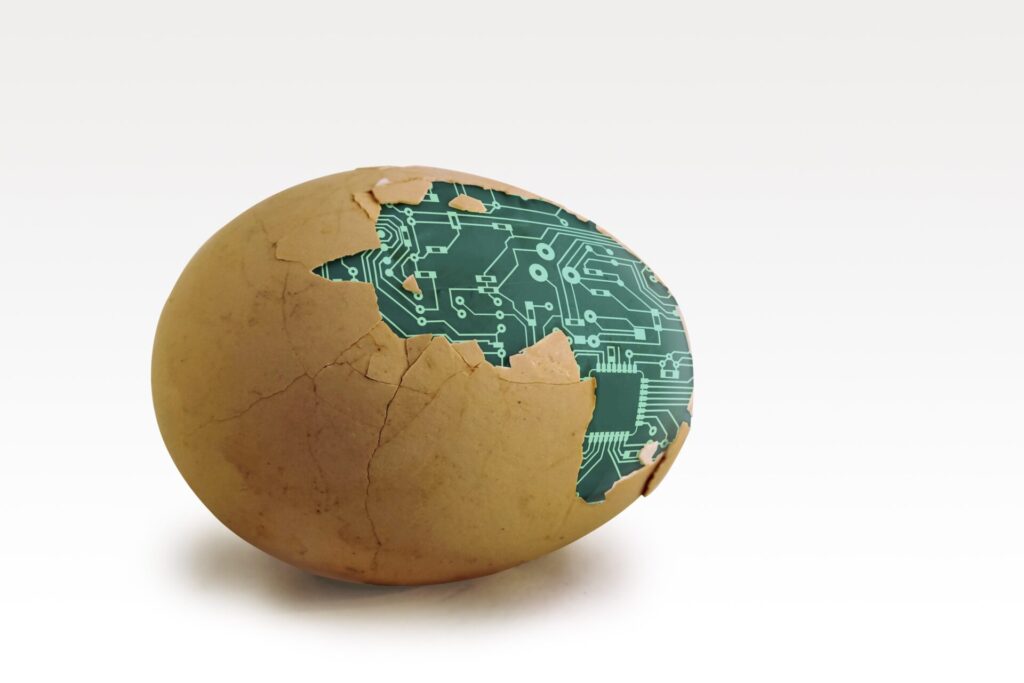Recent advancements in AI offer the potential for optimizing electronic design, which traditionally involve labor-intensive schematic crafting and PCB translation. Learn how electronic design experts and AI can work hand-in-hand.
Imagine an AI schematic designer whispering design optimizations into your ear as you work on your latest design project. With the recent advancements in the world of artificial intelligence, it’s not difficult to imagine this scenario. However, does AI help improve the design process, or is it something electronic design specialists should be wary of? Let’s find out.
Electronic circuit design is the backbone of modern technology, shaping everything from the minute and intricate circuits in our smartphones to the complex circuitry required to make spacecraft function correctly. Even the most minor mistake in electronic circuit design can make things go downhill, especially if you are working on a complex project with multiple layers. Therefore, it is vital to ensure the circuit is designed correctly.
Traditionally, the circuit design process involves meticulously crafting schematics – diagrams representing the electronic components and their connections – and translating them into physical Printed Circuit Boards (PCBs) where the components reside.
The traditional approach to designing circuits is not only time-consuming, but it also has a high chance of error. With the rapid advancements in technology, circuits have become more intricate, requiring more attention and time from the designer. Even the most experienced designers can fall prey to errors, introducing potential malfunctions or performance issues in the final product.
Table of Contents
- AI to the rescue?
- How AI is transforming electronic design
- Optimizing schematics with AI
- AI-powered PCB design revolution
- Is AI a boon or bane for electronic designers?
- The role of the human electronic designer
- The future of AI in electronic design

AI to the rescue?
This is where Artificial Intelligence (AI) offers a game-changing schematic and PCB design approach. AI algorithms, trained on vast datasets of existing designs and manufacturing specifications, can be a powerful assistant for electronic design professionals.
By automating repetitive tasks, suggesting optimizations, and meticulously checking for errors, AI has the potential to transform the design landscape significantly. Let’s explore how AI changes the game for schematic and PCB design, exploring its advantages and potential limitations.
How AI is transforming electronic design
AI’s impact on electronic design isn’t just about automating the design process. There’s much more that electronic circuit designers can achieve by introducing AI into their workflow. Let’s look at what AI offers to the electronic design industry.

Optimizing schematics with AI
Smarter Circuit Design: With AI by your side, you don’t need to worry about optimizing schematics. AI-powered schematic design tools won’t let you design an inefficient circuit.
By analyzing vast libraries of existing designs and performance data, AI algorithms can recommend component combinations that achieve desired functionalities with the highest efficiency. As a result, you will have circuits that consume less power, generate less heat, and minimize signal interference. AI will take into consideration all crucial factors for modern electronic devices.
Intelligent Component Selection: Working with AI-powered tools means you don’t have to go through endless piles of datasheets to look for component specifications like operating voltages and currents.
With AI by your side, you only need to tell your requirements and wait for suitable component suggestions. Your AI assistant will provide recommendations based on your power consumption requirements, operating voltage, and footprint size.
This streamlines the selection process, saving designers valuable time and ensuring component compatibility.
While AI excels at suggesting optimizations, it’s important to remember that human expertise remains irreplaceable. The final decision on component selection and circuit layout should always involve an engineer’s judgment and understanding of the specific application. After all, human designers are ultimately responsible for the creative vision and final design choices.

AI-powered PCB design revolution
Mastering Component Placement
Placing electronic components on a PCB involves carefully considering factors like signal integrity, heat dissipation, and overall board size. AI algorithms can analyze these factors and suggest the most optimized placement for each component, ensuring efficient signal transmission and minimizing thermal issues. This leads to more compact and efficient PCB designs.
Routing Like a Pro
Routing, the process of connecting components with conductive tracks on the PCB, can be a tedious and error-prone task. AI can automate this process by analyzing design constraints and suggesting optimal routing paths to minimize signal length and avoid cross-talk between components. Not only does this improve design efficiency, but also reduces the risk of errors that could lead to board failure.
Error-Free Layouts with AI-powered DRC
Design Rule Checking (DRC) is a critical step in which the PCB layout is compared against manufacturing specifications to identify potential errors. This process can be made efficient with AI, allowing it to examine the circuit layout and flag potential violations, including trace width issues and component clearances.
Thermal Analysis Gets Smarter
Heat management is crucial for electronic devices, but using AI can help designers make better decisions. After analyzing the power consumption of the circuit components, AI can predict heat distribution across the PCB. As a result, designers can identify potential overheating issues and implement heat sinks and other ventilation strategies, ensuring the device operates within safe temperature ranges.
Beyond Optimization
AI for Error Reduction: The human eye can miss details, but AI doesn’t. Algorithms can be trained on vast datasets of known design errors, allowing them to act as a second pair of eyes meticulously examining schematics and PCB layouts.

AI can identify potential problems humans might overlook, such as incorrect component connections, missing footprints, or routing errors. This significantly reduces the risk of mistakes slipping through the cracks and causing malfunctions in the final product. Furthermore, AI can learn from past mistakes, continuously improving its ability to detect potential errors over time.
Is AI a boon or bane for electronic designers?
With all these benefits, it’s easy to see AI as a game-changer for electronic design. But is it a friend or foe for electronic design specialists? Here are the advantages of using AI for schematic and PCB design and manufacturing:
- Faster Design Cycles: Using AI means designers don’t need to spend hours to complete a design. They can save time by allowing AI to look after repetitive tasks and suggest improvements. As a result, designers can focus on the creative aspect of the design process.
- Reduced Errors: AI’s meticulous error-checking capabilities minimize the risk of errors slipping through the design process. This improves product quality and reduces the time and cost associated with fixing errors later in the development cycle.
- Improved Design Quality: AI-powered tools can help designers achieve more efficient and optimized designs, leading to improved performance, lower power consumption, and better thermal management.
The role of the human electronic designer
AI empowers electronic designers to work faster and more intelligently and achieve better design outcomes. However, it’s important to remember that AI does not replace human expertise. The role of the human designer remains vital for several reasons:
- Design Judgment: While AI can suggest optimizations, the final design decisions require human judgment. Factors like cost constraints, manufacturability considerations, and specific project requirements demand the experience and insight of a skilled designer.
- Ethical Considerations: As AI plays a more prominent role in design, ethical considerations arise. Who is ultimately responsible for design decisions – the designer or the AI? Establishing clear guidelines to ensure ethical practices in AI-assisted design is crucial.
- Job Displacement Fears: The rise of AI automation has sparked concerns about job displacement in various industries. While some repetitive tasks might be automated, the role of the electronic designer is likely to evolve alongside AI. Designers must adapt and develop new skills to work effectively with AI co-pilots.
The future of AI in electronic design
The future of electronic design points towards a strong partnership between human creativity and AI capabilities.
The inevitable rise of AI collaboration
AI is poised to become an indispensable co-pilot for electronic design professionals. We can expect to see AI tools taking on more complex design tasks in the future alongside human oversight and guidance. Imagine AI suggesting complete circuit layouts or automatically generating optimized PCB designs – these possibilities are not far-fetched on the horizon.
As AI handles the more tedious aspects of design, it will free up designers to focus on the truly innovative aspects – developing groundbreaking technologies and pushing the boundaries of electronic design.
Moreover, designers would have to keep themselves updated with the latest trends in the AI landscape. They would have to master new tools and embrace the collaborative potential of AI to be ahead in the circuit design industry.
AI is revolutionizing the world of electronic design, offering a robust set of tools to optimize workflows, improve design quality, and reduce errors. However, AI isn’t here to replace human designers. It’s here to augment their capabilities and empower them to achieve better results. By embracing AI as a valuable co-pilot and continuously developing their skills, electronic design professionals are well-positioned to shape the future of technology. The future of electronic design involves human creativity and AI capabilities working hand-in-hand to unlock the full potential of this field.
By incorporating AI-driven results into their ECAD workflows within Fusion, users can significantly streamline these processes. This not only automates the more tedious, repetitive tasks, freeing up valuable engineering time for innovation, but also enhances smart product design by rapidly incorporating AI insights. This synergy between AI and Fusion’s ECAD capabilities is not just a promise of improved manufacturing processes; it’s a practical reality that allows designers and engineers to work smarter, faster, and more accurately than ever before.